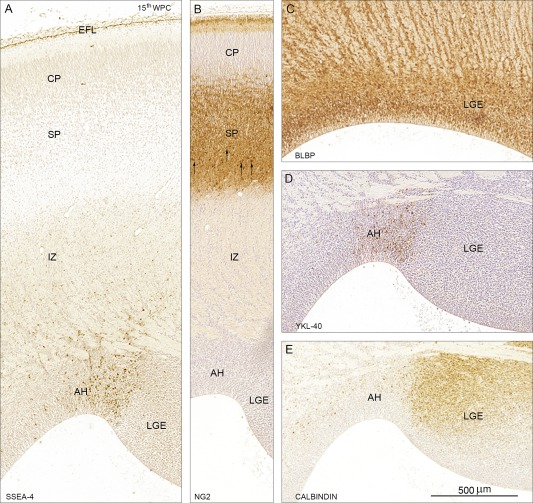Figure 2.

SSEA‐4 (A), NG2 (B), BLBP (C), YKL‐40 (D), and calbindin (E) immunoreactivity in coronal sections of frontal cortex from a 15th wpc human fetus (CRL: 111 mm). A distinct population of small rounded cells in the antihem (AH) is stained for SSEA‐4 (A) and YKL‐40 (D). NG2 positive cells are not associated with the proliferative zones but predominantly found in the lower part of the subplate (SP) indicated by arrows in (B). Immunoreactivity for the interneuron marker calbindin is particularly prominent in the lateral ganglionic eminence (LGE) adjacent to the antihem, whereas BLBP staining is characteristic for all RGCs (C). Many of the small SSEA‐4 positive cells in the intermediate zone (IZ) in (A) are pericytes and thus not a part of the proposed astrogenic subpopulation, and the entire end feet layer (EFL) which is also strongly SSEA‐4 positive and BLBP positive (not shown) is indicative of all RGCs which terminate at the subpial basement membrane and therefore not specifically associated with the astrogenic subpopulation. Abbreviations: AH: antihem; CP: cortical plate; EFL: end feet layer; LGE: lateral ganglionic eminence; IZ: intermediate zone; SP: subplate. Scale bar: 500 µm. [Color figure can be viewed in the online issue, which is available at wileyonlinelibrary.com.]
